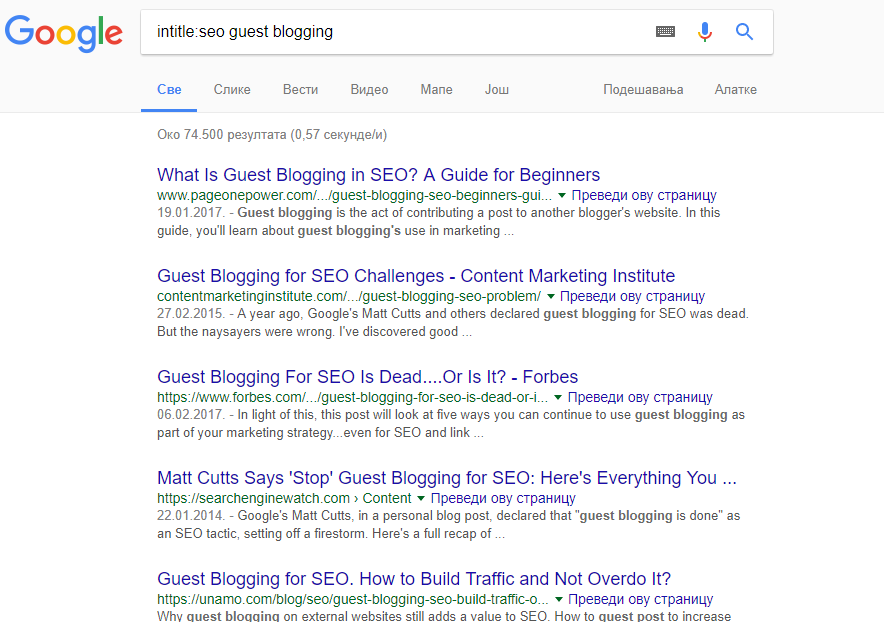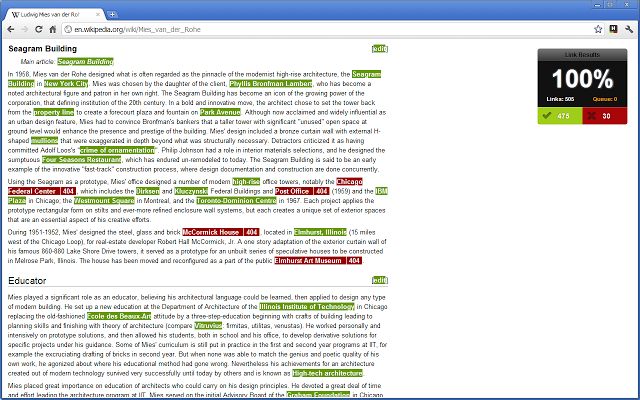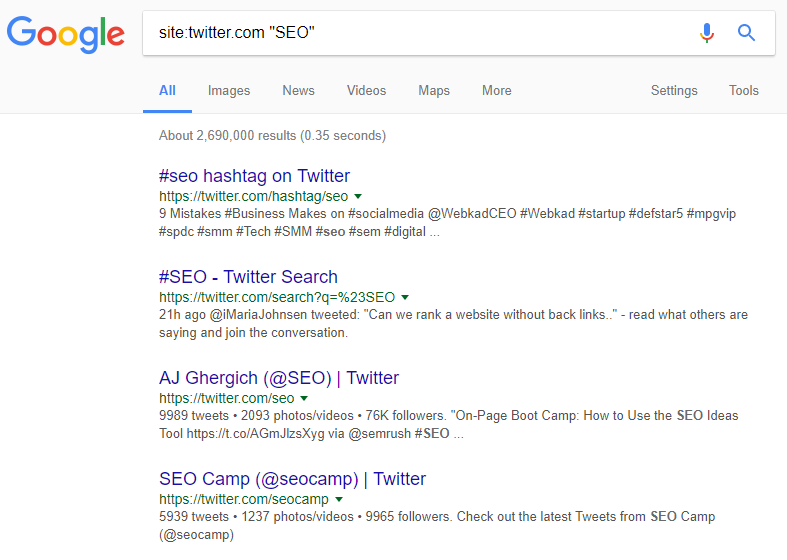What’s the Deal with Guest Blogging? What are the Benefits?
Guest blogging is a great off-site SEO technique.
The general idea behind writing and publishing guest posts across multiple relevant domains all over the Web
is earning high-quality backlinks.
As you probably know, getting as many high quality and relevant sites as possible to point back to your
domain is extremely important for your SEO. We wrote a
10,000-word article about backlinks. If you have read that piece, you probably remember that backlinks have a huge impact on how Google sees
and grades a specific site. They are super important for improving one’s position in SERPs, and that’s why a
whole lot of SEO experts and agencies constantly advise their clientele to invest in link building.
Generating high quality backlinks from top domains can increase your organic rankings, popularity,
relevance, and overall domain authority. In addition, they can also help Google index your site a lot
faster, bring in valuable referral traffic and help users better navigate through your pages.
In a nutshell, backlinks are great because Google uses them as a decisive factor while calculating a certain
site’s worth. The engine has been known to give a lot of love to sites that have a rich backlink portfolio,
and writing and publishing top quality guest posts is currently the best way to acquire high quality,
natural backlinks.
Even though this is probably the main reason why people guest blog today, this technique has been known to
bring a lot of other benefits to those who do it right. A killer guest blogging strategy can help you expand
your network and audience, as well as showcase your knowledge and expertise to the people most likely to
become your customers.
Guest blogging also does wonders for your online reputation. If you write top quality blog posts for
respected websites that generate loads and loads of relevant visits every single day - it’s only a matter of
time before people start to notice and appreciate you for your efforts and expertise.
A killer guest blogging strategy can also help form solid relationships with a lot of influencers within
your niche or market, which can later on lead to other forms of collaborations.
Having a good relationship with the top players in your niche can also significantly improve your promotion
and exposure. If these people start to like you for who you are and what you do, they will organically share
your posts and recommend your businesses to everyone who’s looking for the products and services you’re
offering.
How to Design a Great Guest Blogging Strategy? How to Search for Relevant Publishers that Accept Guest
Posts?
As I have already said above, the general idea behind every intelligent guest blogging strategy should be
to earn those high quality, relevant links from multiple domains across the Web.
Having that in mind, you can probably guess by now that the first step in designing your own guest blogging
strategy should be to create a list of domains that accept guest posts from bloggers. But, before you start
doing that, you first need to decide whether you’re just chasing links or something more.
For example, if you want to build your authority via guest posting, you’ll need to earn links from A list
domains like the Entrepreneur, Huffington Post or Forbes. In order to do that, you’ll need to do a lot more
than just write high quality content. You’ll need to
become an actual contributor
and meet every single one of their strict requirements. But, on the other hand, if you’re guest blogging
just to earn high profile links - you’ll have a much easier road ahead of you.
Picking the right targets can be tricky if you don’t have a clear enough plan of what you want to achieve
with your guest blogging efforts. Knowing your guest blogging goal from the very start is extremely
important, because it affects your action plan.
For example, if you’re guest blogging solely for links, you’ll have a much longer list of prospects where
you can send and publish your work. You need to find as many relevant blogs with an acceptable domain
authority, check if they have published guest posts before and go after them.
When picking the right targets for your guest blogging efforts, you need to focus on the following:
-
DA, a.k.a Domain Authority - links from sites with a lower DA are usually not nearly as beneficial as
those from sites with a higher DA.
-
Niche - promoting a piece about cars on a site that writes about fashion won’t help you increase your
visibility, regardless of its DA. That’s why you need to pay attention to relevance in your guest blogging
efforts.
-
Audience - the same goes for your audience. If you don’t promote the right type of content to the right
audience, you won’t see any real ROI from your guest posts.
-
Traffic - SEO is all about traffic, that’s why you need to make sure that you’re publishing your content
on a site that people actually visit.
-
A range of other quality and engagement indicators - such as the presence or absence of clear contact
info; number of shares; number and type of comments; the quality of writing; the age of the site, etc.
Once you understand all that, you can start looking for prospects. There are numerous ways you can find
these opportunities. In the following segments of this article, I’m going to list and explain 15 of the most
popular strategies for locating your prospects and charming them into giving you a chance to publish your
content on their website. Let’s get started:
1. Basic Google Search
This strategy revolves around using the search engine’s power to your advantage. The rules are pretty
simple: all you have to do is keep combining the right keywords until you’ve exhausted all relevant
queries.
-
For example, if you’re looking for sites where you can publish SEO-related content, your first move
should be to search Google for something like: "SEO write for us" "SEO guest blogging", "SEO writer
guidelines".
Once you do that, the engine will provide you with various niche related sites that have specific web
pages or site sections dedicated to guest posting. This basically means that they’re interested in
letting guest contributors publish their content on the site.
The only problem with this approach is the fact that you have to do a lot of manual digging. Also, you
need to get your creative juices flowing and think of all the possible strings that could help you
find sites where you can promote your content and earn those valuable backlinks.
Here are 31 of the most relevant search strings you can use to find loads of quality opportunities through
Google’s basic search:
- "[keyword]" + "write for us"
- "[keyword]" + "guest post"
- "[keyword]" + "blogging guidelines"
- "[keyword]" + "guest article"
- "[keyword]" + "guest article opportunities"
- "[keyword]" + "guest post opportunities"
- "[keyword]" + "guest blog opportunity"
- "[keyword]" + "guest post by"
- "[keyword]" + "contributing writer"
- "[keyword]" + "guest writer"
- "[keyword]" + "guest blog submission"
- "[keyword]" + "submit guest blog"
- "[keyword]" + "guest column"
- "[keyword]" + "contribute to our site"
- "[keyword]" + "guest post written by"
- "[keyword]" + "suggest a blog post"
- "[keyword]" + "guest post written by"
- "[keyword]" + "submit an article"
- "[keyword]" + "contributor guidelines"
- "[keyword]" + "guest blog post wanted"
- "[keyword]" + "blogger wanted"
- "[keyword]" + "writer wanted"
- "[keyword]" + "article wanted"
- "[keyword]" + "blog post needed"
- "[keyword]" + "article needed"
- "[keyword]" + "writer needed"
- "[keyword]" + "accepting guest posts"
-
"[keyword]" + "post written by" + "[familiar writer/link builder]"
- "[keyword]" + "become a guest blogger/guest writer"
- "[keyword]" + "guest author"
- "[keyword]" + "submit article"
As you can see from these examples, it’s all about putting the right keyword in the correct context.
2. Advanced Search
If the first strategy doesn’t provide you with enough relevant results to accomplish your guest
blogging/link building goals, it’s time to take things to the next level and start using some advanced
link prospecting strategies.
As in the example above, everything starts with the right keyword, that’s why it’s of utmost importance to
first create a list of targeted phrases and topics which you can effectively combine with your search
strings. For example: SEO, search engine optimization, link building, link prospecting, etc.
Prospecting is an exhausting process most of the time. It tends to eat up a lot of your free time if you
don’t do it with a specific goal in mind. That’s why, apart from having a firm grip on your niche-related
topics, you need to start using advanced search operators that will certainly help you narrow your scope
and find the best opportunities in record time.
Some of the key operators include:
-
Intitle search - This one is pretty self-explanatory. It looks for the desired text within page
titles. This operation is terrific for analyzing content and seeing if the topic you’re planning to
cover has already been written about on a specific site. Example:
intitle:"SEO guest blogging".
-
inurl search - This search command looks for keywords and search strings directly within the link.
This search modifier is great for quickly searching through sites and finding "guest post", "guest
blogging", "guest blogging guidelines" or "contributor" pages. It’s great for finding content about a
specific topic on various sites.
Though similar, these two search modifiers work well together. This is how I often use and combine
them:
- inurl:[guest] + [topic]
- intitle:[topic] + inurl:"write for us"
- intitle:[topic] + inurl:"guest blog"
- [topic] + inurl:"submit" + intitle:blog"
Exact match search - putting quotation marks around your keyword or search topic will tell Google to
provide only exact results for your query. This is terrific for stalking your prospects or looking for
specific input on even more specific topics from your desired influencers or websites
The cut search - This search modifier eliminates the unwanted fat from your research. If you, for
example, type in "Rad Basta" -Base, Google will ignore any Base related results. This
is especially useful when your research is constantly being interrupted by specific sites or pages.
-
Site search - Typing "site:name.com" will limit Google’s search to a single website.
For example: site:fourdots.com "Rad Basta". This is great for stalking influencers and
finding relevant topics you can write about for a specific online publisher.
The OR - This search technique allows you to search for multiple terms at once. For example:
"Rad Basta" CEO OR Founder OR President. OR can be replaced with a pipe operator.
Of course, this is just the tip of the iceberg. There are many other search strings you can use for
various different purposes, but these are some of the more important ones when it comes to link
prospecting and guest blogging. If you’re interested in learning more about the advanced search
technique, you should probably check out Jon Ball’s
Search Modifier Techniques
post for SEJ.
3. Competitor and Backlink Analysis
Spying on your competitors is always a smart thing to do. Regardless of what you do or sell online, it is
more than likely that you are competing with literally hundreds and thousands of different brands for the
same customers, clients, users or traffic.
And the worst thing about it all - more than a few of them really know what they’re doing. A lot of brands
today are in-sync with all the latest trends and marketing techniques, which is why it’s almost impossible
to beat them through regular promotion. They have been in the business for years, and they really don’t
shy away from trying new things.
Even though this might seem like a death sentence at first, when you really sit down and analyze the
situation from different angles, you’ll come to view it as a blessing.
Having powerful competitors gives you the opportunity to study their work and replicate their successful
methods. Especially if you are looking for ideas to update your SEO and link earning strategies.
Doing a backlink analysis with tools like
Majestic
will help you see the amount and type of links that specific key players have pointing back to their web
addresses. This will provide you with enough valuable insight into a list of blogs and domains where you
can publish your content to earn a noticeable boost in your rankings.
The game plan is simple:
- Find your top competitors.
-
Start digging through their backlink portfolio until you find a relevant site with a great domain
authority, page rank, overall credibility and relevance to your business where your competitors have
successfully published their content.
- Make a list of the desired targets.
-
Use advanced search to see if your new opportunities accept guest posts and acquaint yourself with their
contributor rules.
- Analyze each blog post one at a time.
- Come up with your own idea that’s relevant to the specific publisher.
- Pitch it right away.
- Replicate the process for each entry on your list.
4. Broken Link Building
Naturally, there are many different ways you can use backlink analysis to create links via guest blogging
for your site.
Another strategy that I also recommend, and that has a lot to do with checking backlinks, is broken link
building. By installing a cool add-on like
CheckMyLinks
to your Google Chrome Browser, you can effortlessly go through your targeted sites and check the state of
their outbound links. The more links a specific blog post has, the better the chances one of them may be
broken. This often happens with ultimate lists and similar posts that often quote a lot of research.
That’s why you should always check the state of links on sites that write about stuff that’s relevant to
your business.
Once you find a link that isn’t really working anymore, your second move is to contact the webmaster,
inform them about the state of their links, and offer your content as a replacement for that broken
resource. By giving them a top quality article (accompanied with a link to your website’s homepage) to
replace their broken resource, you’ll earn yourself some additional exposure and link juice. In this
scenario, you’ll get your name, words and your link published on the desired site.
5. Reverse Image Search
Another technique that revolves a lot around spying on your competitors. This strategy is based on finding
people from your niche or market who often create high-quality backlinks for their sites through guest
blogging.
The process goes like this:
Find your target, extract a link of their headshot and paste it into Google’ reverse
image search:
Once you do that, the engine will feed you with a killer list of sites where that particular person has
their photo published. This list will provide you with enough insight to design your own guest blogging
strategy by simply following in your prospect’s footsteps.
6. Influencer Stalking
While we are on the subject of stalking your prospects, let’s cover another strategy that has a lot to do
with following people around the Web, like a cyber bloodhound.
If you want to achieve success with guest blogging and earn those high quality backlinks for your site,
the first thing you need to know is that random and aggressive idea pitching will get you nowhere. No.
Your efforts need to be calculated. It’s in your best interest to first get to know your targets and let
them know you before you contact them. That’s why closely following popular bloggers online and building
relationships is a crucial part of every intelligent guest blogging strategy.
Popular bloggers have big audiences and good authority online. They can help you promote your content and
expose your brand and expertise to loads and loads of readers that you’d probably never reach on your own,
especially if you’re not very well known in your niche or market.
Apart from increasing your site visits and getting some new followers, popular bloggers and social media
influencers can also introduce you to other powerful people online.
Networking is everything on the Web. The more people you know, the better the chances you’ll have of
getting published on your desired sites.
There are numerous channels where you can find the right influencers and build quality relationships. One
of them is none other than Twitter. This social network makes it possible for people to find their
prospects through simple hashtag searches. It also gives users the opportunity to design an infinite
number of lists and fill them with specific bloggers and influencers for any niche or market.
-
If hashtag search isn’t enough for you, you can also use one of the above-mentioned search strings,
like
site:twitter.com + "your keyword", to find your targets. You can search Twitter for
lists, not just keywords and topics. Users create lists all the time and Twitter allows its users to
follow them. Use site:twitter.com + "your list", and find lists that someone has
already created.
Once you find or create your list of desired bloggers, make sure to follow them, fav and retweet their
blog, and frequently comment on their posts. If you write intelligent additions to their blog posts in
the comments, admins will start to notice your efforts and remember your name, which will
significantly improve your chances of getting published on their blog, once you finally pitch your
ideas to them.
7. Link Builder Stalking
This is basically the same thing as the previous approach, with the only difference being the target
itself. If you’re in the business of generating tons and tons of links, it would be of great value to find
some good link builders from your niche and follow them on Twitter.
Why?
Because you can replicate their process and target the same sites they do for guest blogging.
But how does one know if someone is a link builder or not?
Well, it’s not easy. Every successful link builder has a believable persona. But, there are certain
details that reveal their intent. Number one being the commercial links. When you find someone on Twitter
who frequently guest blogs and shares their articles, the first thing you should do is go through your
prospect’s profile and look for repetitive commercial links in their blog posts. Once you find the
pattern, you will instantly know that you have found your target.
8. Influencer Research
Similarly to influencer stalking, this strategy offers a bit of a different angle for establishing
relationships with the industry’s top publishers.
Reaching out to influencers is never an easy job. It tends to take up a lot of your time and energy.
Building relationships in an environment where the people you’re trying to reach are constantly bombarded
with all sorts of messages and proposals tends to feel like an impossible task.
In order to achieve success, you either need to work harder than everyone else or work smarter. I would
choose the latter.
There are many ways of approaching influencers, bloggers and top web editors online. My personal favorite
is to first truly acquaint myself with my targets.
After I find my targets through social media, my next move is to understand which networks they prefer and
why. You can start looking for influencers through hashtag search or any other channel. From there, you
should get an understanding of your influencers’ passions, structure and worth. Open every single one of
their social media profiles and look for things like:
-
Twitter: Bio, place of work, linked sites, hobbies, tweets, hashtags and websites that frequently appear
on their profile, people whom they frequently retweet, fav or communicate with.
- LinkedIn: Work experience, education, the content they share and like on that network.
- Instagram: Personal passions and experiences.
By going through their profiles on these networks, you’ll have a lot better understanding of whom you’re
targeting. There is a massive amount of content being consumed and shared on every single one of these
channels by that person and you can tap into it easily with a bit of basic investigating.
Once you find and finally understand these influencers, your next move is to come up with the right pitch
that’s in-sync with their values, preferences and interests. Your job here is to approach your prospects
on their favorite network, in a tone and voice that best suits them. Of course, you also need a good
enough and relevant reason for writing them.
9. Reverse Influencer Search
Similarly to influencer stalking, this strategy offers a bit of a different angle for establishing
relationships with the industry’s top publishers.
Like I already said above, there are many different ways to approach influencers, bloggers, and top web
editors online. One of my personal favorites is the reverse influencer search strategy.
Reverse influencer search starts after you complete the basic influencer search. The goal here is to look
for people who are influencing your influencers. The so-called early adopters. One way to find them is to
crawl through your influencers’ Twitter pages and look for people with whom they converse the most. Your
objective is to look for people who are frequently connected with your influencers. That’s why you should
look for retweets and favorite tweets on their profile.
For example, if your goal is to influence me, Rad Basta, and you’re having a hard time getting me to
notice you, then you should try to target someone close to me, who I frequently like and retweet. When you
get endorsed by someone whose opinion I respect, that will certainly have a positive effect on how I feel
about your brand. When you, later on, reach out to me again and underline that you’ve worked with someone
I like, you’ll significantly improve your chances of getting your post published on one of my sites.
10. Alltop.com and Similar Directory Sites Search
Created by Guy Kawasaki back in 2008, Alltop is a website dedicated to helping you easily come into
contact with the best websites and blogs from your niche or market. It’s basically one giant list of
domains, neatly organized by niches.
Alltop is an extremely useful tool for people who are in constant need of finding new places to guest
blog. All you have to do is type your keywords into the site’s search, and
Alltop.com will feed you loads of sites that match your
topic or interest.
For example:
The only problem with using Alltop for guest blogging is that you cannot instantly know which of the
listed sites accept guest posts. You have to open every single one and use advanced search strings to see
if they are interested in publishing your article or not. That tends to eat up a large chunk of time out
of your day, but it doesn’t mean that your efforts won’t pay off. If you really do some serious digging,
you’ll certainly find some killer opportunities that you may have otherwise missed.
There are many sites like Alltop, like
theweblist.net,
popurls.com, etc. Even though many of them are trying to
be basically the same things as Alltop, the truth is - they aren’t really as good for bloggers.
11. Blog Commenting
-
This is probably one of the oldest and most popular ways to do link building through guest blogging. If
you are a person who frequently follows blogs, you have probably noticed that the same people often
comment on them. And they don’t just write basic stuff like: “great post”, “thanks for sharing”, etc.
No, they do their best to actually contribute to the posts.
Why do people do that? To get noticed, of course.
I have already talked about this practice in our
“I'll Answer that for You” SEO Strategy blog post.
This is how most people today, especially from the SEO world, work on their brand and authority online. By
sharing insightful comments that actually expand the subject at hand and offer new information or
alternative ideas to the readers, these users work on their relevancy, and thus significantly increase
their chances of getting published on that site.
The methodology behind this way of promoting yourself on the Web is quite simple:
- Find a blog you want a link from by using some of the above-mentioned strategies.
- Add it to your RSS feed.
- Start commenting on almost every subject that’s relevant to your expertise.
-
Share your knowledge, participate in the discussions and always make sure you’re actually offering new
and valuable information.
If you have the capacity to create a steady flow of top comments on your target site, people will start to
notice you. That, of course, will lead to new site visits to your website. It will also help generate new
followers on your social media pages. Apart from all that, if you become a regular contributor on certain
sites, the editors will start to remember your name. That will naturally provide you with the opportunity
to write an actual guest post for them, and thus reap the benefits of your newly-developed credibility.
Gianluca Fiorelli is a great example here. This SEO expert has built a giant following over at MOZ, just
by writing intelligent comments on basically every new post that was relevant to his expertise and work
experience. Thanks to that, he has written more than a couple of posts for the domain. Heck, he even did
his very own Whiteboard Friday video.
12. HARO
Also known as
Help a Reporter Out, shortly put, HARO is an
ever-growing community that gathers experts from various industries. It currently reaches more than
800,000 sources and 55,000 journalists and content creator
The beauty of it? It makes for a powerful ally when it comes to finding guest post opportunities, it
connects you with relevant knowledge leaders, and anyone can join for free. In addition, it
can amplify your PR efforts
and help you test your business or personal brand on the market more effectively.
When you think about it, HARO is the mediator we’ve all been craving. It has a large list of contributors
on one side, and on the other - you have reporters, i.e. the people seeking expert opinions on various
topics. If you are experienced in a particular domain and have great knowledge relating to it, HARO can be
your vital marketing tool. Spread the word about your business, product or services, while building
authority in the industry. Let’s not forget that, by providing value and sharing your knowledge, you can
get featured on relevant websites and earn high quality links.
So, what is the best way to use the full potential of the HARO platform?
Upon registration, HARO guides you through profile setup. You are expected to answer a number of questions
regarding your business, brand, and the level of your expertise. You can then choose between two options,
depending on the way you plan on using HARO:
- Do you want to contribute?
- Or are you looking for experts who are interested in contributing to your work
And the good news is, you can choose both options if you’d like.
After you sign up, you will be asked to add a field of interest. Once you’ve finished setting everything
up, HARO will start sending you relevant emails, according to the information you have provided. Each
email will provide you with the most recent list of topics where you can pitch your answer and apply to
contribute with your expertise.
Whether you’re looking to elevate your PR activities or work on meaningful link building, opportunities
are delivered right to your inbox via HARO.
However, while HARO is an amazing tool, you have to be aware of the high level of competition. A lot of
renowned experts are active on the platform, both as contributors and content creators, which gives them
an advantage compared to the small fish in the industry.
The key to standing out? Be creative with your questions, try observing a certain problem from a different
angle, and ask something that’s intriguing and different. When it comes to sharing your knowledge, invest
real time and effort into it, and try to provide unique value that comes from your real experience.
13. Tomoson
Tomoson is another useful source for both brands
and agencies that wish to find influencers, and for bloggers who have built a name for themselves and
are now looking to make money through promotions and giveaways.
Here’s how it works: bloggers create a profile on the platform, pick their desired category (i.e. a niche
in which they are relevant and where they have already built a significant audience), and they openly
state their terms. Of course, they are required to leave a link to their blog. This way, brands and
agencies can determine the size of the audience and the level of their engagement, the quality of the
blog, and whether or not working with a certain blogger makes sense for their set marketing goals.
What does this mean for your business?
With Tomoson, you get access to a
structured list of blogs
you can browse through. There is also a great option of searching through categories, which helps you
narrow down more than 100,000 influencers who are currently registered on the site. However, you should
know that the platform attracts mainly bloggers who are interested in giveaways. The majority of them know
how to cash in on their fame, thus it is unlikely they will be willing to publish your guest post without
compensation.
So, how can you benefit from the platform? Tomoson is precious mainly because it’s a huge database of
guest post opportunities you might never encounter by using plain Google search. The way you use the list
is up to you. You’ll probably notice some of them are ideal for scraping external links, and others are
useful because they give you access to a new network of influencers. It’s a huge opportunity to build new
relationships.
14. Blogrolls
As you probably know, blogrolls are lists of links on a blog, usually somewhere in the sidebar, and they
serve as shortcuts to the sites the owner of the blog frequently visits or likes. Blogrolls are also used
to promote friends’ blogs or give the readers a bigger pool of sources where they can get more good
content from a particular niche.
Example, SEO by the Sea:
When you really sit down and think about it, blogrolls are basically powerful curated lists of great
sites, pre-qualified to become your link building/guest blogging opportunities.
Any site that has found its way to a blogroll is at least worth a look. Usually, these are web addresses
that generate some steady readership. That’s why blogrolls can help you find relevant guest blogging opps.
Another good thing about blogrolls is that they are easy to find. All you have to do is use a search
string to find them.
For example:
- "keyword" + blogroll
- "Keyword" + "sites to follow"
- "keyword" + "my favorite site"
- "keyword" + "site recommendation"
15. Dibz
Even though effective, every single one of these manual methods tends to eat up a lot of your time. You
need to do a lot of digging and copy/pasting. And the worst of it all - you constantly have to refresh
your list and look for new opps. That’s why people use tools like
Dibz for this sort of guest blogging and link prospecting.
Dibz helps you:
- Easily locate great prospects for guest blogging and other link building purposes.
- Filter out good results from the bad ones.
-
Instantly fetch an email contact, so you can start outreaching web admins and blog editors right away.
- Manage your data using CSVs.
- Upload your findings to tools like Pitchbox for easier outreach.
Dibz is a cool SEO utility that significantly simplifies and speeds up the whole link building, link
prospecting, and guest blogging process.
Dibz helps you: All you have to do is fill in the blanks and let Dibz do its magic. Once you open the
tool, you’ll see a pretty simple and user-friendly control panel. Type in your desired keywords in the
search field, select the research type you want Dibz to do for you (in this particular case, “guest
blogging”), check if the search terms of that particular preset search are good enough for you, add custom
parameters if necessary, select the language, TLD, date, and depth - and voilà, you’re done! In a matter
of minutes, Dibz will provide you with a very useful list of killer prospects you can start outreaching
right away!
Over to You
That’s it. These are some of the best opportunity research strategies you need to know if you want to
dominate your niche via guest blogging. The only thing you have to do now is apply or combine the ones
that seem best for you and get the ball rollin’.
Naturally, once you find your opps, you need to work on your pitch as well.
The thing is - guest blogging is a complicated process that requires a lot of effort and dedication.
That’s why a lot of people don’t really do it.
Even though most people understand the value of guest blogging, I’m willing to bet that a lot of your
competitors don’t have the patience or resources to get their content published on various quality domains
across the Web.
Having said all that, I think this underlines the reason why you should do it. Apart from earning you
those quality links that will influence your rankings, a solid guest blogging strategy can turn your
whole business around. Plus, keeping track of all your links in Base makes the link management and link
building process much more efficient and easier.
Follow our steps and I promise you, you’ll see some significant ROI from your investment in a couple of
months.
Thank you for reading this post from top to bottom, that’s it for now.
Cheers,
Rad @ Base.me

 We fixed link building
We fixed link building We fixed link building
We fixed link building We fixed link building
We fixed link building We fixed link building
We fixed link building Use cases
Use cases Outreach
Outreach Buying links
Buying links Selling links
Selling links Features
Features Backlinks Health Check
Backlinks Health Check Link Building API
Link Building API Blacklisted Links
Blacklisted Links Easily Sell Links
Easily Sell Links SEO Metrics by Ahrefs
SEO Metrics by Ahrefs Chrome extension
Chrome extension Link Building Database
Link Building Database Team Management Tool
Team Management Tool SEO Reporting Dashboard
SEO Reporting Dashboard Index Your Backlinks
Index Your Backlinks LB Outreach Management
LB Outreach Management Expiring Links Alerts
Expiring Links Alerts Automatic SPAM Analysis
Automatic SPAM Analysis Link Building Transparency
Link Building Transparency Google Link Index Checker
Google Link Index Checker Manage External Link Builders
Manage External Link Builders















